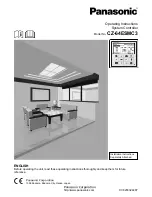
Sentry Xpress 5 Cone-Fire / Ramp-Hold
Safety Rules
The warranty on your Sentry Xpress controller does not
cover damage from overfiring, regardless of the circum-
stances. It is the operator’s responsibility to make sure the
kiln turns off at the end of the firing.
Follow these safety rules in addition to the ones in your
kiln manual:
G
When the kiln is not in use, disconnect the
power and keep the lid or door closed. (For
larger kilns with heavy cordsets, we recommend
a power disconnect box near the kiln.)
G
Do not leave the kiln unattended, especially
near the expected shut-off time. Do not leave a
kiln turned on at your studio while you are at
home sleeping.
G
Wear green #3 firing safety glasses when look-
ing into the peephole of a hot kiln.
G
Do not touch hot sides of kiln. Keep unsuper-
vised children away.
G
Install your kiln at least 12 - 18 inches from any
wall or combustible surface. (See manufac-
turer’s recommendation for your model.)
G
Do not open lid or door until kiln has cooled and
all switches are off.
G
Fire only in a well-ventilated, covered and pro-
tected area away from flammable materials.
Keep cordset away from hot sides of kiln.
G
DANGEROUS VOLTAGE! Do not touch
heating elements with anything. Disconnect
kiln before servicing.
G
Do not operate if the controller itself is hotter
than 158°F / 70°C. (See instructions on page 22
for checking circuit board temperature.) Never
allow the firing room temperature to exceed
110°F / 43°C. (Measure room temperature
three feet from the kiln.)
G
Stop a firing by pressing the Start/Stop button,
not by only disconnecting the power. In certain
conditions, the controller will interpret a power
interruption as a power failure and turn the kiln
back on when you reconnect the power.
G
Place the kiln on the stand recommended by the
manufacturer. When a kiln is safety tested, the
lab fires the kiln on the stand designed for the
kiln. Cinder blocks or bricks can inhibit the flow
of air under the kiln. They can also change the
kiln’s heating characteristics.
G
Place the kiln on a non-combustible surface.
G
Keep the kiln lid or door closed when the kiln is
not in use. This keeps dust out of the kiln. Also,
should someone turn on the kiln while you are
away, the closed lid will keep the heat safely in-
side the firing chamber.
G
Never place anything on top of the kiln, even
when the kiln is idle. If people become accus-
tomed to placing papers and other objects on
the kiln, they may forget and do that while the
kiln is firing.
G
Remove tripping hazards from around the kiln.
Keep the kiln’s supply cord out of traffic areas.
G
Avoid using extension cords.
G
Never fire tempered glass inside a kiln. It could
explode.
G
Greenware, which is unfired clay, must be bone
dry before firing. Moist greenware can explode
inside the kiln, damaging the ware and the kiln.
Place a piece of greenware against the inside of
your wrist. If it feels cool, it is too wet to fire.
G
Store kiln shelves in a dry area. Moist shelves
can explode inside a kiln.
G
If you smell burning plastic, turn the kiln off.
Examine the wall outlet (socket) and supply
cord for signs of burning.
G
Never place extra insulation around the kiln in
an attempt to conserve energy. The extra insu-
lation can cause the wiring and the steel case to
over-heat.
4
Do not leave your kiln unattended during operation.
Large studio kilns should have a power disconnect box for the
kiln. Place the box in the kiln room.





































